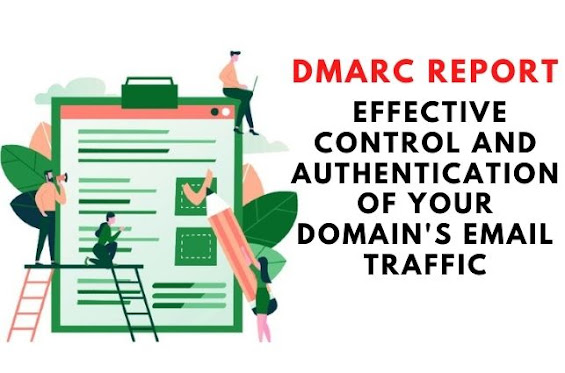DMARC is the technical standard that
ensures protection for email communication from online threats
DMARC defines an organization's
email authentication procedures and directs recipient email servers about how
to implement them. Some people confuse DMARC for a mail authentication
protocol, while it is only a supplement to mail authentication that builds on
the critical authentication standards SPF
and DKIM.
Functions of DMARC Reports
DMARC
reports help in systematic and efficient email authentication. They enable
domain owners to perform the following functions:
- Publish email authentication practices
- State the course of action for the emails failing authentication checks
- Report the action on such emails
What Is The Online DMARC Report?
Inbound
mail servers generate two types of online DMARC reports as parts of the DMARC
validation process. They all are.
1. Aggregate
Reports
They
are XML documents that show statistical data of incoming messages to the server
that claim to be from a specific domain. They are designed to be easy for
machines to read.
2. Forensic
Reports
They
are individual copies of emails that fail authentication. They are enclosed as
a complete email message in a unique DMARC report format called AFRF
(Authentication Failure Reporting Format). Forensic reports help in
troubleshooting domain authentication and identifying malicious websites.
Aggregate DMARC Report Format in Brief
ISP information
- The name of the Mailbox provider
- The Mailbox provider’s email address and contact information
- The report ID number
- The range of the beginning and end dates
A description of the DMARC record in
detail
- The From domain/Header domain
- The DKIM and SPF alignment parameters
- The domain policy
- The subdomain policy
- The percentage of messages that need a DMARC policy
Summary of authentication results
- The IP identified as the source of either fraudulent or legitimate email
- The count of IP addresses
- The disposition of the message
- The DKIM authentication results
For
Office 365 subscribers, DMARC reporting is a simple and mostly automated
process. Here's how it keeps track of incoming and outgoing emails.
DMARC for Inbound Mail
In
Office 365, the program automatically detects and marks the inbound emails’
malicious domains. It subsequently sends a detailed report to the user.
DMARC for Outbound Mail
Users that use Office 365 with the original domain, i.e. onmicrosoft.com, do not need to set up DMARC for their business. Because SPF is already configured in the Microsoft account, Office 365 generates the DKIM signature for outgoing email automatically.
In
addition to Office 365, an organization that uses an on-premise exchange server
or a custom domain must explicitly configure DMARC for outbound emails.
Google DMARC Report
Once a day, Google sends DMARC reports to its users. It is sent to the email address specified in the DMARC record by organizations. Each receiving email server from the domain will send a separate report if they allow reports with DMARC record tags.
The
metadata is included in the Google DMARC report,
which is transmitted in XML format. It basically tells you if a message from
your company's domain passed DMARC. The DMARC report also contains the
following information:
- The total number of outbound messages from a single IP address
- The DMARC, SPF, and DKIM authentication results for outbound and inbound messages
- Action that the receiving server takes, such as accepting unauthenticated messages that passed ARC authentication
Why Choose A DMARC Report Analyzer
Open Source
Receiving,
storing, and analyzing reports is the specialty of a DMARC report analyzer open
source. Organizations use a third-party service since reading and interpreting
DMARC data in their raw format can be difficult. There are a number of additional
reasons why firms need it.
- An organization may receive multiple reports in a day based on the number of outgoing email servers, the number of emails, and the DMARC policy record’s reporting options.
- Organizations might require a dedicated mailbox or group for receiving and storing the reports.
- Open source services combine individual reports to make them readable.
- They help in analyzing the aggregate DMARC reports. Users also get feedback on the effectiveness of the DMARC record.
- Such services offer tools for managing and maintaining DMARC independently for their domains.
DMARC reports are an important
part of an organization's overall information security policy. They may go over
the data to make sure that only allowed servers are sending messages from their
domain and that the authentication checks are passed. The DMARC reports also
serve as a warning to administrators about potential spammers, as well as
assisting in the maintenance of network and system security.
Source:-https://dmarcservice.medium.com/dmarc-report-effective-control-and-authentication-of-your-domains-email-traffic-caa1533d5827

